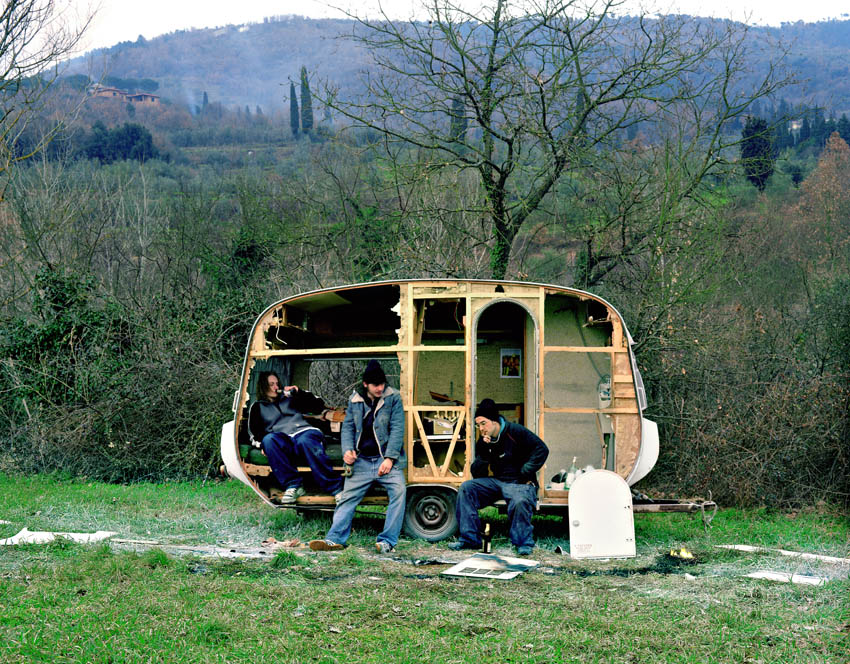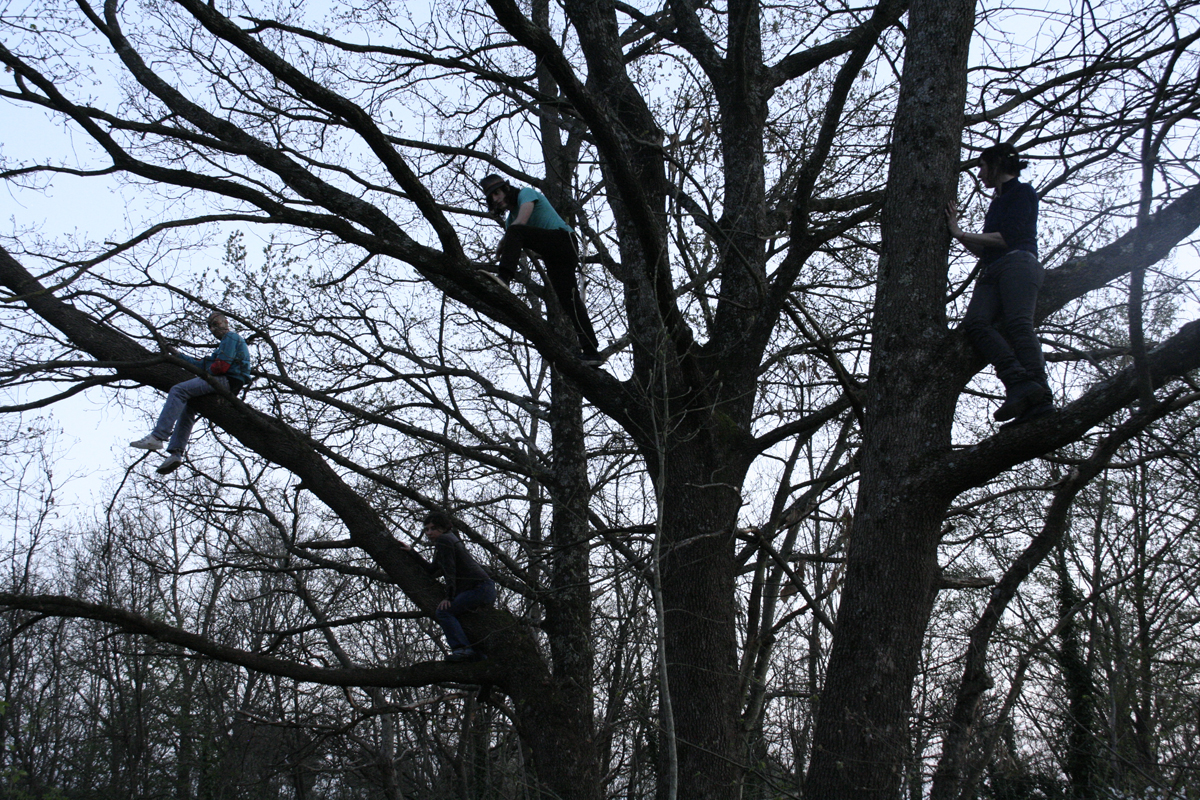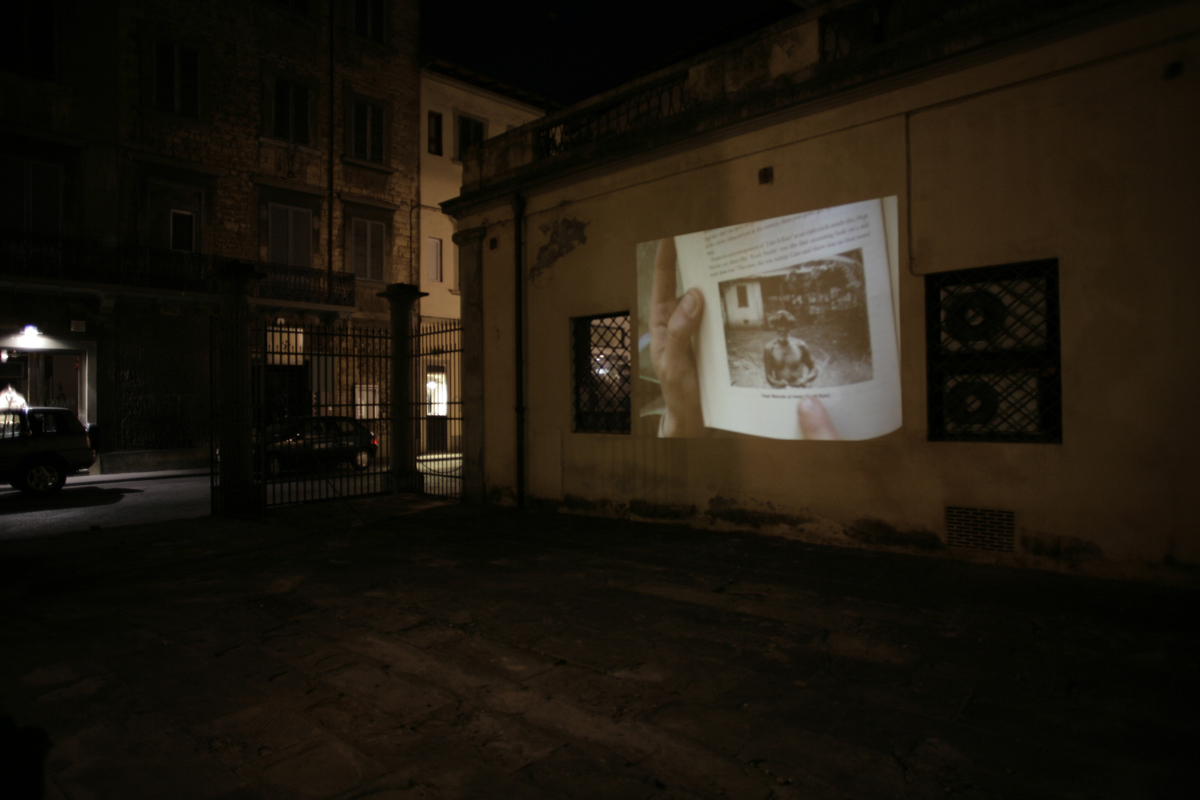Curated by Pier Luigi Tazzi, Dryphoto arte contemporanea, Out Museum, Prato
2008




A series of exhibitions and events featuring the works of the artist from 2001 to the present was held in some of the most important institutional sites of the city, including Palazzo Banci Buonamici, the headquarters of the Province of Prato, the Palazzo della Prefettura, Teatro Metastasio, Palazzo Vaj, now the location of Monash University Prato Centre, as well as the exhibition space of Dryphoto arte contemporanea, the organizer of the events.
Second Escape, the first extensive monograph of Robert Pettena’s work (1999 - 2008), was organized for publication (with the same title, by Gli Ori) . The book is edited by Pier Luigi Tazzi, curator of the group of exhibitions and events that accompanied its release.
The book is edited by Pier Luigi Tazzi, curator of the group of exhibitions and events that accompany its release.
“
Pettena tends not to create or rethink models, but to capture moments in which a meaning is evident […]. [He] tends to stage what the English call ‘puns’, word games, rather than games of language, jeux de langage. He justifiably distrusts the latter, seeing them as authoritarian traps, since they present themselves as authoritative, and he is wary of anything authoritative. So he always preserves the dimension of play, as an escape route, a second escape, more than a security exit.”
Pier Luigi TazziLooking back on his family history and asking questions about his identity, Robert Pettena created numerous video installations from material gleaned from his memories, intertwined with his social environment. His video installations weave a corporeal web around us. All the following works express the relationship between the external and the internal: wind farm game 2002, Harold 1999, sink house 2002, freestyle 2004. Jungle Junction focusses even more strongly on everyday reality. It looks at information, public reception areas and structures, and playfulness, an aspect always present in his work. The houses on stilts of the favelas and the bidonvilles of the third world reflect the tree houses that boys like to create as safe hiding places. But Pettena mixes up these third world structures and children's playgrounds, surprising us.
In Pentagon Play in 2002 the artist already dealt with the theme of playgrounds, which we are so familiar with, since they exist all over the world, built in pretty much the same way, out of the same materials, using the same primary colours. These areas, designed and built by adults, recreate a part of the world where the child is taught how to fit into adult society. The child must become a prosperous adult citizen. Being poor and living on the edges of society, but also of imagination and initiative, will lead to the creation of the favelas and bidonvilles that we were talking about before. This art, which searches for social meaning converges paradoxically towards a single point. The child's imaginary tree house is a symbol of freedom, more like the Jungle Gym than the city Playground. In the jungle there are no rules: the children create their own magic place, inventing and constructing it as they like, using whatever materials they find and making it the way they want. This is the feeling behind Pettena's Jungle Bar. Floating above the ground, questioning the seriousness and repetitivity of adult life, this is a place where people can enjoy themsleves and have fun.
The bar looks like a forest, made up of a multitude of different plants from different places, creating the sort of vegetation that probably wouldn't exist. The bar contains a mixture of plants and tecnological elements. Both within the bar and around it a wonderful pulsating disorder reigns. One is reminded of Tom Sawyer's flight on the raft, of Robinson Crusoe's life on the desert island, of the exotic domestic life of Salgari or Verne, of the cries of Tarzan of the apes, even a bit of the sour taste of Lord of the Flies. To be an artist is to invent other worlds, to tell stories, to render testimonies, to take up causes and responsibilities: it is both an honour and a duty to be an artist exhibiting in public. At times like this, when the artist manages to maintain contact with his cultural roots, he rises above day by day mundanity by turning elements of it upside down, creating a mirror image.
Robert Pettena keeps moving the frontiers of his work, always running further away, but with the feeling that a video camera is following him, so his image always stays in focus. He plays with taboos, excorcising them. He is too knowing to avoid being ironic, but he is playful enough to think of each of his works as a wonderful new experience. This was how at Manciano, in the Site Specific per Quattro Venti, he came up with the amusing idea of putting a librarian in an disused carpenter's warehouse to destroy a pile of books, by cutting them in half: exactly the opposite of what a librarian is supposed to do, thus attracting the attention of the public who normally avoid the library.



















































